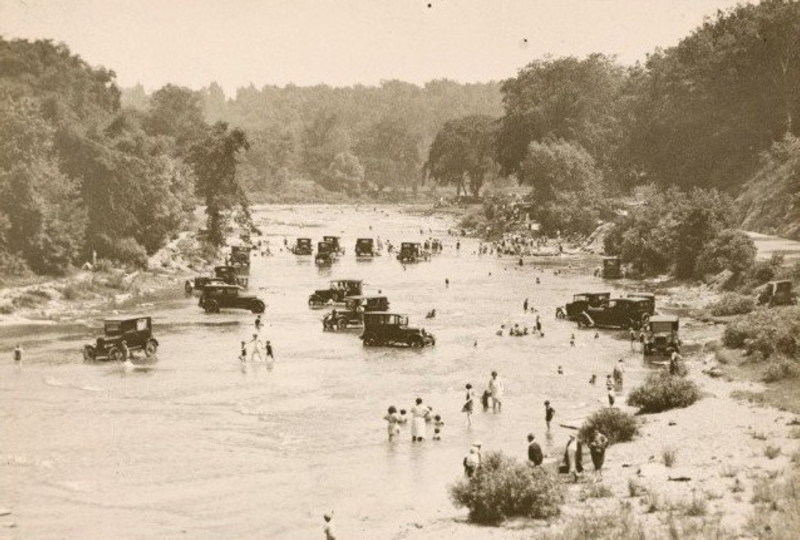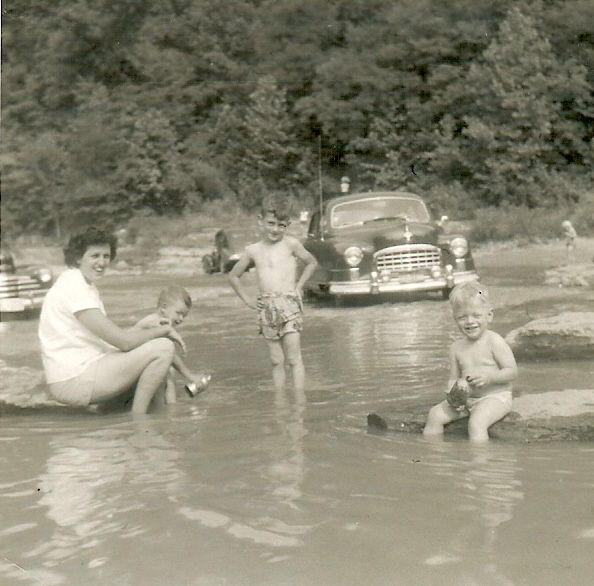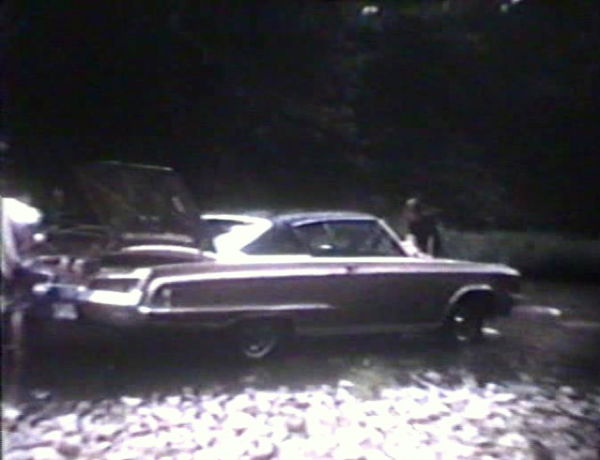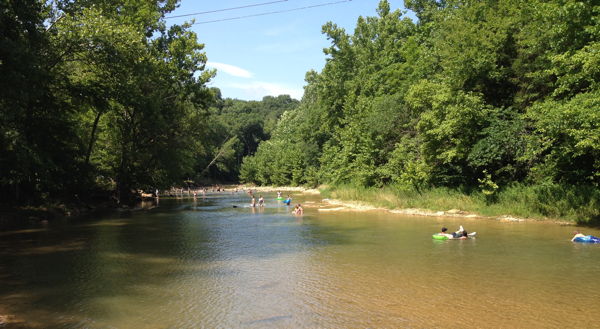
The following article by David Strange was originally published on 26 Jul 2015. It is archived here for your reading enjoyment.
There was a time, not so many hot summers ago, when air conditioning was rare or non-existent. Electric fans and open windows gave little relief from stifling heat. There were few swimming pools, especially for regular folks. In the "country," city water was rare. Cisterns or wells often provided only a limited supply of water that had to be conserved for more important things. Ah, but in the countryside there was something better than artificial pools or electric fans.




There was the river.
You could "kill two birds with one stone" as the saying goes, in the river. Not only could you have fun swimming and splashing and cooling off with your friends.
You could wash your car.
Yes, it was almost a tradition in rural areas to just drive the car down into the cool flowing water, turn on the radio to a favorite channel, and wash away both dust and cares at the same time. Bob Druin and others remember driving cars down the old South Ford Road "just past Doc Clay's driveway" and into the Salt River for a little summer relief. The location at the time, with its shallow water and flat stone bed, was perfect.
Other folks remember washing their cars in Floyds Fork, Rolling Fork, Cox's Creek, Knob Creek, Otter Creek, and just about anyplace the water was accessible enough and low enough to get the job done. Pat Jean remembers, "My dad used to wash his car in a creek and I would like to wade in the water while he was doing that. You remember the little things that made you happy back then." This of course was a time when water was pure, and pollution from a car wasn't yet a thought.
Peggy Myers laughs that she washed cars in the river until her car got stuck one time, which is not a good thing to happen in a river. Indeed, taking a car down into a stream can be dangerous if you don't use common sense.
Bob Druin and other regulars knew to be careful. Besides having the sense to not drive into water too deep or too swift, regulars also knew to not park the car too close to a bridge. You see, people driving over a bridge tend to throw things over. It sure takes the fun out of washing your car if you are dodging bottles falling from the sky.
What the car washers might not have known was that many of the places they used to access the river with their cars had been some of the original river crossings for pioneers and even buffalo long before there were cars. The access point that Bob and so many others used in Shepherdsville was such a place, hence the name of the old "Ford" road. It was not named for a car, but for the ancient crossing, or "fording place". That ford was one of the reasons that Shepherdsville was located where it was.
A road bridge across the Salt River wasn't built at Shepherdsville until 1906. Before that the river could only be forded in low water. If water was high, a person might use Pope's Ferry a little upriver, or just wait until the water went down. When cars began to replace horses, many of the old crossings were simply no longer good enough.
A good, cool, clean stream makes a perfect place to pass some time on a hot summer day. I recently drove over to Otter Creek Park in Meade County to check the location of a car-washing photo from around the 1920's. I think I found the place, which turned out to be pretty easy. There must have been a hundred people when I got there, swimming, playing, and laughing in the same spot as people were nearly a century ago. The only real difference was that cars were no longer allowed.
I don't recommend washing cars in the river today. Most access points are cut away anyway, and pollution is always a modern factor to consider. But there was a time when music and laughter blended with the sound of rippling water to sooth both body and soul; when work and play could be joined together on a hot summer's day to create memories that would last a lifetime.
Copyright 2015 by David Strange, Shepherdsville KY. All rights are reserved. No part of the content of this page may be included in any format in any place without the written permission of the copyright holder.
The Bullitt County History Museum, a service of the Bullitt County Genealogical Society, is located in the county courthouse at 300 South Buckman Street (Highway 61) in Shepherdsville, Kentucky. The museum, along with its research room, is open 10 a.m. to 4 p.m. Monday through Friday. Saturday appointments are available by calling 502-921-0161 during our regular weekday hours. Admission is free. The museum, as part of the Bullitt County Genealogical Society, is a 501(c)3 tax exempt organization and is classified as a 509(a)2 public charity. Contributions and bequests are deductible under section 2055, 2106, or 2522 of the Internal Revenue Code. Page last modified: 12 Sep 2024 . Page URL: bullittcountyhistory.org/memories/carwashing.html